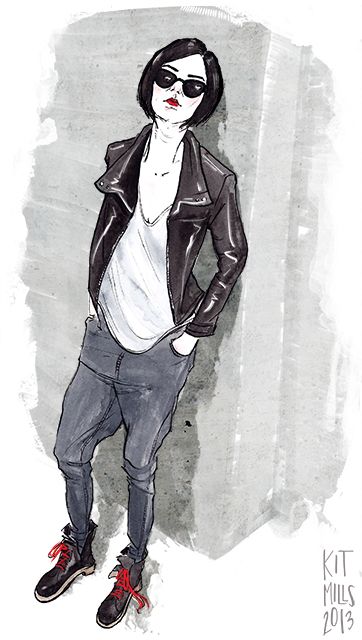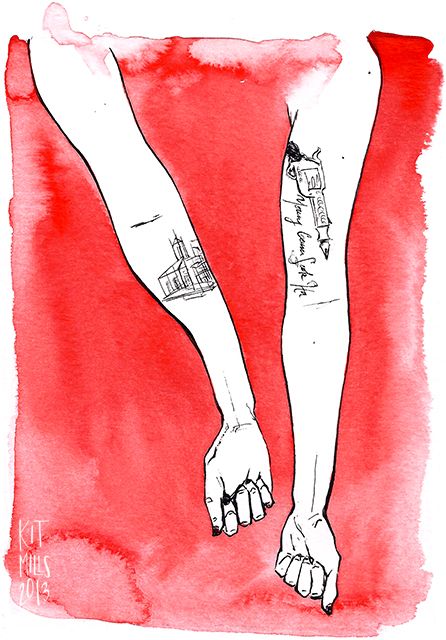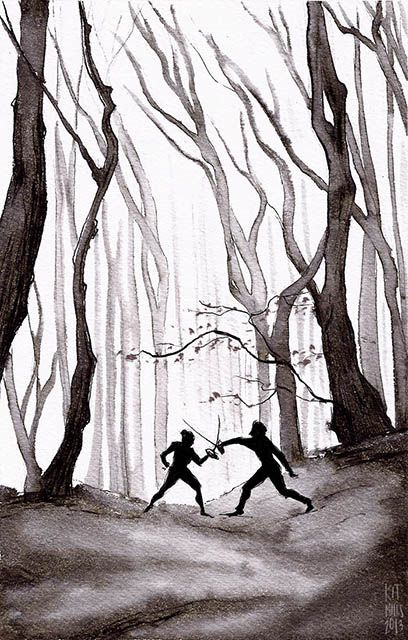How to Make a Subway Map with John Tauranac
Hear from an author and map designer who has been creating maps of the NYC subway, officially and unofficially, for over forty years!


This week I have something a little different to talk about on the Art of Style. I’ve just finished illustrating a novel (!) and wanted to profile my partner in crime and the brains of the operation, Ms. EJ Koh. Every time I see her, I’m struck by how dead cool she looks, and can say without a doubt that her writing has exactly the same qualities as her personal style—sharp, irreverent, and a little confrontational. This is a typical outfit—slouchy shirts and pants paired with structured elements like leather jackets. She’s also got some cool tattoos:

On the left is an architectural sketch by the artist Alberto Giacometti, and on the right is, fittingly enough, a pistol morphing into a pen. Power of the written word and all that.
It’s not all about appearance, though. This is what EJ has to say on the subject of fashion vs. practicality:
“I grew up in the bay area in California, which is Northface up the ass, but I caught some of that. So my priority is always comfort—can I eat like hell in this? Do I have to loosen my pants in this? Or can I take a nap in this if I have to? Can I run away from somebody in this? And because of that, I don’t wear heels. Not once ever—it might help that I’m flat-footed—but I just can’t!”
I don’t wear them, either. An angry caricature victim might come after me, and one must always be prepared to flee.
While reading through Red and figuring out how I wanted to illustrate it, I noticed that color symbolism and imagery play a significant part, especially in the types of clothes that the characters wear. EJ explains:
“Wakes, or these demonic creatures, are represented by the color black. But I didn’t want them with fangs, scales, rags. I wanted them to be immaculate because of their indulgences—even in appearance and style. So someone like Azel [a main character] would care very much how he presents himself and what he wears. He’s OCD about lint on his slacks or blood on his shoes while he’s training in the forest. White is just the opposite of that. White is letting go of the temporal self and its possessions. The young protagonist Sera is going to essentially dress like a monk. She lowers herself as a practice of Spirits [the angelic counterparts of Wakes]. But in this case, the idea turns into a corrupted and forced sense of non-permanence – she might not matter, but no one else will either. What was fun? Shifting the color black to associate with things like cleanliness and having the color white associate with corruption—I got to play with the extremes as also having an extreme likeness to the other.”
If you’re interested in seeing this dichotomy in action, drop by Bethesda Fountain in Central Park this Sunday (April 14th) between 12 and 3pm for our launch party. There will be a 600-person game of Assassins going on, with rules (and dress code) based on Red. Fighting and fashion: two of my favorite things.

Check out the Red homepage for more information, or purchase the ebook (which includes 17 illustrations like the one above) on Amazon here.
Follow The Art of Style by Kit Mills. For more of Kit’s work, check out their website.
Subscribe to our newsletter